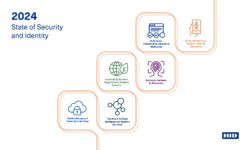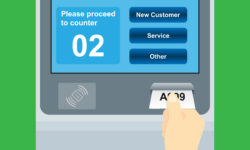Campuses Report Having Mixed Success With Access Control, Lockdowns
Demand for access control, locks, visitor management and other solutions is on the rise, but the ability to lockdown is still a challenge.

(Image: Kadmy/stock.adobe.com)
(This article first appeared in SSI sister publication Campus Safety.)
As I crunched the raw data from this year’s Campus Safety Access Control and Lockdown Survey, I encountered some very interesting contradictions.
On the one hand, compared to what was revealed in our 2019 Access Control and Lockdown Survey, this year, a lot more respondents say they’ve purchased equipment over the past two years and/or are considering buying more in the next two years. On the other hand, fewer say they can lockdown 100% of their campuses.
You would think that if more schools, universities and healthcare facilities have purchased more access control and lockdown solutions that they would report improvement in their lockdown capabilities, right?
I can’t explain this contradiction with the data I have at my disposal. One possibility, however, is the increase in purchasing and the due diligence that is required for this type of activity has led our survey takers to become more aware of their lockdown vulnerabilities. Most of us have investigated an issue, only to find out that the problem is much worse than we had previously thought.
This contradiction is just one of the many interesting data points revealed in the results from the 2021 Campus Safety Access Control and Lockdown Survey. Read on for the specifics.
Campuses Continue to Acquire More Systems, Equipment
As stated previously, a lot of purchasing appears to have been going on in the educational and healthcare sectors over the past two years. Eighty-four percent of respondents say they’ve purchased card and/or biometric access control systems. That’s 22 percentage points more than what was revealed in our 2019 survey on this topic. This year, 45% say they are considering adding more of these systems in the next two years. That’s 8% more than two years ago.
Purchasing of locks and/or door hardware has also been strong, with 78% of respondents saying they’ve acquired this type of equipment over the past two years. Additionally, demand for these products only appears to be increasing, with 45% of survey takers saying they are considering buying locks and/or door hardware over the next two years. That’s 10 points more than what respondents said in 2019.
Demand for visitor management is also extremely strong, particularly in schools. Eighty-three percent say they purchased visitor management systems over the past two years, with 29% saying they are considering buying more of these systems in the next two years. Healthcare facility respondents have also been very active in acquiring systems that manage guests (75%), with more than half (59%) saying they are considering purchasing more of this type of solution.
Adoption of security front entrance vestibules has dramatically increased as well, with 74% of respondents saying they’ve implemented or upgraded this solution over the past two years.
NFC/BLE mobile phone access control was added to this question this year, and overall, there have been a lot of purchases of this type of solution recently. Nearly two out of three (62%) respondents overall have purchased NFC/BLE solutions over the past two years with nearly half (45%) saying they are considering buying more.
Purchases of fences have also increased, from 36% in 2019 to 67% in this year’s survey. The same can be said for window safety and/or security solutions. Two years ago, 33% of respondents said they purchased these solutions over the past two years, while in 2021, 69% said they’ve recently made purchases.
Even the adoption of lockdown/shelter-in-place policies and procedures, which was very strong in 2019 (81%) increased to 83% this year overall.
Fewer Respondents Can Lockdown All of Their Buildings
When an emergency happens, it’s critical that a facility be able to lockdown and do so quickly. Unfortunately, this year’s survey found that there has been quite a bit of backsliding on this front.
Compared to 2019 when we last asked our readers how much of their campus can lockdown, there has been a significant drop in the percentage of respondents who now say 100% — from 30% two years ago to 17% now. The good news, however, is that the vast majority of respondents say they can lockdown more than half of their campus — 86% this year compared to 79% in 2019.
Not surprisingly, K-12 schools/school districts still have the greatest ability to lockdown. Seventy-nine percent say they can lockdown 75-100% of their campus. Unfortunately, that’s an 11% decrease from two years ago when 90% of K-12 respondents said they could lock down 75-100% of their buildings.
When we asked those respondents who can lockdown how quickly they can do so, only 39% said in 5 minutes or less, compared to 71% two years ago. More respondents, however, now say they can lockdown in 6-10 minutes (28% compared to 15% in 2019).
K-12 campuses have the fastest lockdown response times. Eight in 10 respondents say they can lockdown their campuses in 10 minutes or less.
Door Hardware, Visitor Tracking Get High Marks
Although most threats to a school, college or hospital come from someone who is already on campus, attacks coming from off-campus do pose a problem, as the victims of the Sandy Hook and Parkland mass shootings will attest.
Overall, more than seven out of 10 of our survey takers believe they have adequate door hardware to protect against outside threats. Hospitals are the most confident (80%), while K-12 and college respondents are less confident (70% and 69% respectively).
After a lockdown is implemented, it’s critical that campuses can account for everyone in the building, including visitors, volunteers and contractors. According to this year’s survey, nearly eight in 10 (79%) respondents are really confident or moderately confident they can do so.
Due to the responsibilities of K-12 schools for children, as well as the duty of care expected of hospitals for their patients, it’s not surprising that both K-12 and healthcare respondents had higher degrees of confidence in accounting for everyone in their buildings during a lockdown — 87% and 83% respectively said they are “really” or “moderately” confident. That said, colleges and universities weren’t too far behind their healthcare and K-12 brethren. Nearly three out of four said they were “really” or “moderately” confident.
Read on to find out what is satisfying campus end users about their access control solutions…
If you enjoyed this article and want to receive more valuable industry content like this, click here to sign up for our FREE digital newsletters!

Security Is Our Business, Too
For professionals who recommend, buy and install all types of electronic security equipment, a free subscription to Commercial Integrator + Security Sales & Integration is like having a consultant on call. You’ll find an ideal balance of technology and business coverage, with installation tips and techniques for products and updates on how to add to your bottom line.
A FREE subscription to the top resource for security and integration industry will prove to be invaluable.







